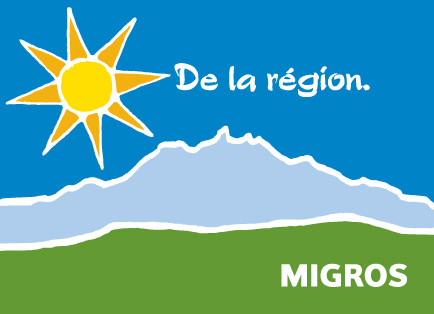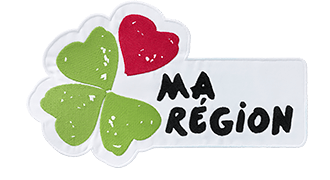A brief introduction
At an era where more and more ecological questions have risen, it seems that European countries, such as
Switzerland,
are trying to encourage the sale of their national products within their own territory and reduce the
importation of alimentary goods.
Indeed, one can easily notice that swiss supermarkets are promoting regional products, with labels such as “Aus
der Region” in order
to answer a growing request from customers to buy local products.


 However, are these few changes a simple superficial trend, or do we really import fewer goods? The research
conducted for the lecture
Applied Data Analysis at the EPFL intends to determine the origin of most products we consume within Switzerland
and in general,
to give an overview of the income of resources from other countries to Switzerland, taking into account
information as the origin
of the ingredients and the place of manufacture.
The research was conducted with the help of the database Open
Food Facts,
which provides origin information about products that are sold in different countries around the world.
However, are these few changes a simple superficial trend, or do we really import fewer goods? The research
conducted for the lecture
Applied Data Analysis at the EPFL intends to determine the origin of most products we consume within Switzerland
and in general,
to give an overview of the income of resources from other countries to Switzerland, taking into account
information as the origin
of the ingredients and the place of manufacture.
The research was conducted with the help of the database Open
Food Facts,
which provides origin information about products that are sold in different countries around the world.
Where do the products we consume come from?
As part of our study, it is interesting to first understand the general situation in terms of food importation of our country and our neighbors in Europe. Which countries are the most important manufacturers? As we will see later, the answers can have an important impact, as processed food is not always manufactured within the country it is sold, and the origin of some products has to be foreign, as not all vegetables and fruits can grow under our latitudes. However, as Switzerland is a small country and requires the resources from other countries in order to feed its population, it is non negligible to study the behaviour of our neighbors, before focusing on our country.The following maps show the most important manufacturers for the products sold in Europe and Switzerland.
-
Another way to visualize the most important manufacturers for Europe is the following network graph. Here we can clearly see that France is the biggest importer, with a total of 45824 products, whereas the rest of the importers are proportionaly pretty equivalent in the number of products they import.
-
Finally we can see here that most products from our database that are consumed in Switzerland are manufactured in the country itself, even though France remains a big importer of manufactured products
Switzerland greatly depends on other countries in order to feed its population. Because of the repartition of the mountains, the size of arable land is not big enough in order to produce and fulfill the needs of the entire population. The report "Statistiques et évaluations concernant l'agriculture et l'alimentation" of 2016 of the Union suisse des Paysans shows that, from 2010 to 2015, the indigenous production covered on average 60,83% of the consumption of foodstuffs. It means that at least 39,17% of the products we consumed in Switzerland in-between 2010 and 2015 were imported goods. This is also shown by the results provided by our dataset that although Switzerland provide the most of products itself but it strongly is dependant to other countries.
What kind of products are these countries import?
Now, we take a look at the categories which the products in our dataset belong to. There are about 12K categories for the products which are sold and manufactured inside the Europe. It is interesting to see which countries tend to manufacture which kind of products?
Some of the most abundant types of products in the dataset are plant-based products, dairy products, sugary snacks, meat, cereals and potatoes. For most of these categories, France, Italy, Germany and Switzerland are part of the top manufacturing countries. Germany and France by their part, are recognised as being part of the top global food processors, supported by a developed workforce, progress in food technology and marketing innovation.(link)
The following table demonstrate which countries are dominant in the importation of these five categories inside the Europe. This information is obtained from Open Food Fact dataset.
Diving in the dataset, in the case of Switzerland, is found that there is a strong presence of products from
MIGROS and COOP, enterprises committed to the local production.(link)
Evolution of consuming more local in Switzerland
Unfortunately there is no data available about the date or amount of consumption in the open food fact dataset. So we used other datasets which were more official to investigate the evolution of consuming more local in Switzerland.
Also it should be considered that the data provided by open food fact dataset is generated by the help of public, so the presented results so far may not perfectly represent the reality.
The following bar charts compare the amount of consumption with the importation of products for five important categories.
Although these graphs does not show any trend in growth or decrease in importation, they represent for most products, we tend to consume more products that are produced by Switzerland rather than imported ones. However, categories such as fruits greatly depends on the importation from other countries. This is due to the fact that we consume fruits that cannot grow in Switzerland, due to the climate, and the the demand is bigger than what the country can offer.
Is there an evolution of importation of goods in time?
The swiss Federal Customs Administration (AFD), department of the swiss confederation, proposes free open data on the swiss import of varied products. Among others, the quantity of products from Food, Beverages and Tobacco imported every year since 1988 is available. We can see that there is a increase of imported foodstuffs throughout the years. In order to better understand this phenomenon, we determined a strong linear correlation between this increase and the growth of the swiss demography since 1988.
According to AFD, As we can see from the graph bellow, Italy is our main importer, with an amount of 598,673,940 kg of foodstuffs imported in 2017. Italy is followed by France, Germany and Spain.
So... are we consuming local?
In a general way, we can say that we do consume more local products than imported ones. Indeed,
Switzerland still provides more food goods than it imports, with a mean of approximately 60%. However, we do not
eat more local products every time of the year. It seems that during the course of spring, or at the end of the
winter
Switzerland lacks of indigenous products and needs to import more foreign products.
Overall, there is also a great tendency to import more and more foodstuffs, but this can be explained by the
fact the swiss
population is growing. This growth of demography means that there are more and more people to feed but
the surface of arable land cannot increase consequently. Future challenges to be considered for the coutry would
be to still be
able to produce the majority of products its population consumes in incoming years. Yet, this important question
of local
resources also belongs to the bigger problematic of the availability of the earth's ressources, and the fact
that we use more
than what the planet can renew (this year, on 1st August 2018, we had consumed more than what the planet
can provide in an entire year according to Global Foorprint Network),
but it is not
the focus of this report.
As a final word
Consuming more local is a difficult task, as it means to be aware of the real seasons for foods such as
vegetables or fruits,
and to restrict our consumption of some products to specific times of the year. Indeed, the consumption of fresh
tomatoes, strawberries
or apricots in the middle of the winter are bad habits and should not even be considered, as they just do not
respect nature.
These choices should be made for obvious ecological reasons, but other challenges are also at the core of this
need to consume more locally.
Indeed, the agricultural sector in Switzerland suffers from a decreasing employement rate since 1990, evolving
from more than 250'000
employees in the country to a little more than 150'000 in 2016 (
statistics from Union suisse des Paysans, archives from 2016). The agricultural sector could be the
first
to benefit from a consumption of
local products and such behavior, if generalized to a great amount of the population, could save small farmers
and help the swiss economy.
As a conclusion to this observable trend, it is interesting to acknowledge that beyond the general visible
tendency of promoting regional products in our
supermarkets, the question risen by this study is in fact more important and significant that one might think.
Indeed, in 2014, the SSN, the Société Suisse de Nutrition
(the Swiss Society for Nutrition), created a programm called
FOODprints, which encourage people to consume more locally. The group found out that 25% of our
environmental nuisances are due to our
bad eating habits which include, among other components, such as our too large consumption of meat, the fact
that we tend to buy too many
products that are not seasonal or that were imported by plane. Of course, Switzerland have to import products in
order to feed its population,
as the land resources are not sufficient for the entire country (as reported from SSN).
But, by consuming products according to their season in our latitude, we can reduce the ecological impact, as
they will require shorter
journeys to be imported, and we can also increase our nutritional health, by beeing aware of what we eat and
why.
The question of the consumption of local products is thus linked to the complex issues of our health, that
greatly depends on our environment,
hence the ecological aspect, and on our bad alimentary habits, and to the importance of developing and promoting
local workers,
which is also related to an economic aspect.